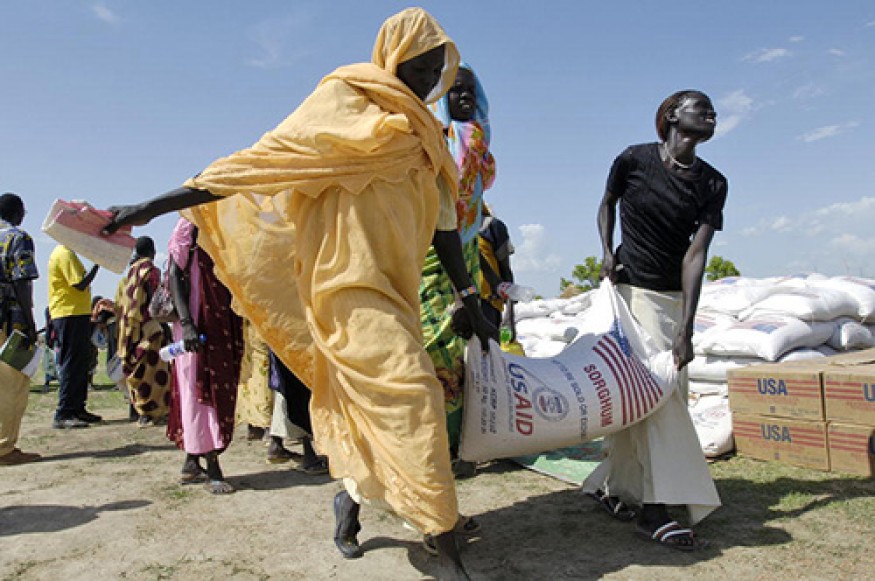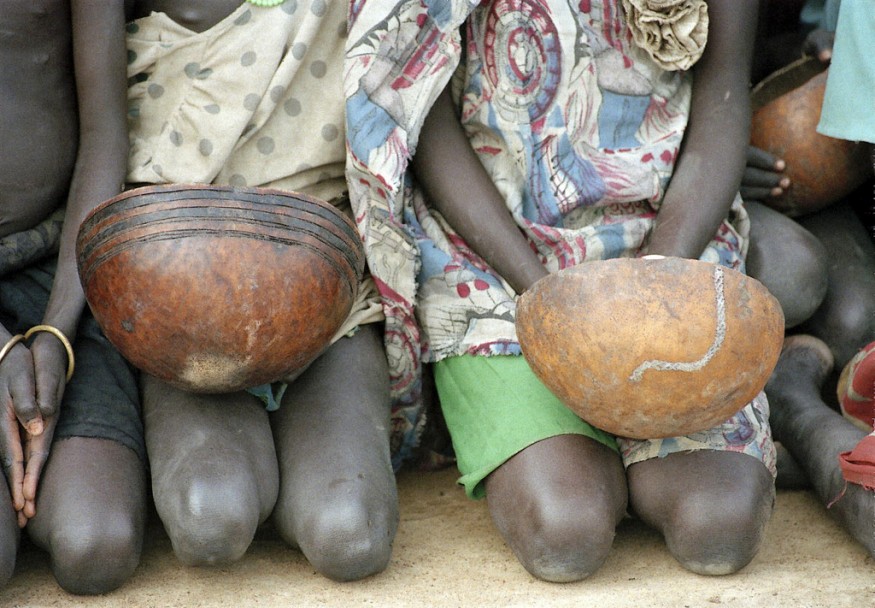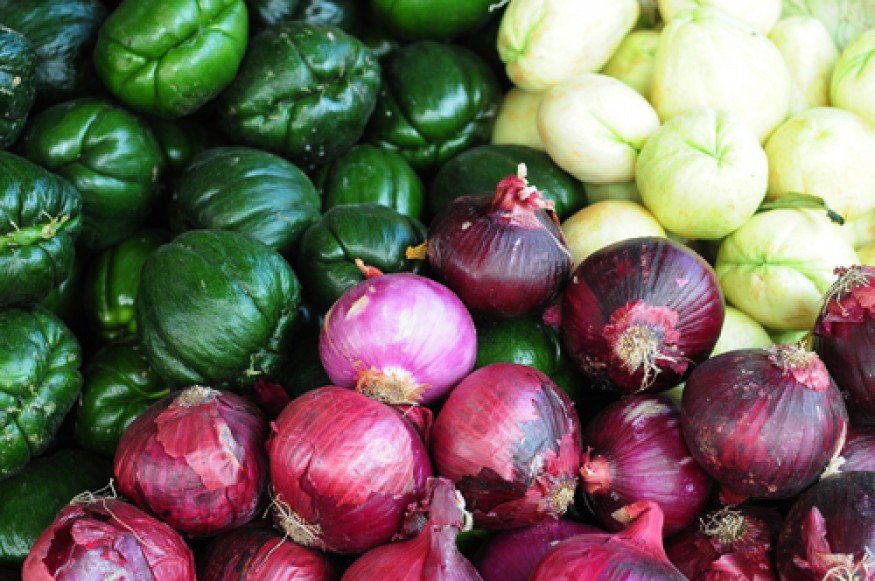What Are the Two Major Government Programs That Supply Nutritional Supplementation to Poor Families

Renew Your Membership Today
Please renew your membership today to support our work together in 2022, including urging Congress to increment funding for international nutrition programs. Increased funding for these programs that prevent and care for chronic malnutrition could save the lives of millions of children.
Hunger Programs
What does a world without hunger look similar? It looks like everyone having the nutritious meals they need to flourish. Churches, charities, nutrient banks, and non-profit organizations cannot get there alone. Authorities programs and policies play an of import role too.
Federal domestic nutrition programs such as SNAP (formerly known as food stamps), Women, Infants, and Children Plan (WIC), and the school lunch program are just a few examples. These programs proceed millions of Americans from going hungry. International humanitarian assistance responds to natural and human-caused disasters (the Indian Sea seismic sea wave, for example) and ongoing worldwide crises such as the situation in Syria.
Just catastrophe hunger requires more than just giving people a meal today. Addressing the root causes of hunger — primarily poverty — is just as important. Every bit long as people don't have the resources they need to put food on the table, hunger will go along. Staff of life also works for policy reforms that ensure economic security and self-sufficiency over the long-term for people in the U.S. and around the world.
Countries struggling with extreme poverty exercise not accept the resources to fairly finance their own economic and social development. Development assistance programs are designed to reduce poverty and encourage economic growth in poor countries. They include programs for agronomics, health, pedagogy, the environment, and democracy and governance.

Humanitarian Response to Emergencies
When disaster strikes, hunger often follows. Emergencies include natural disasters and disease outbreaks, or outcome from climate or economic conditions that slowly build to a breaking point such as food shortages, droughts, and conflict. These emergencies frequently have disastrous side effects including refugee crises and gender-based violence. Emergency situations can chop-chop go from bad to worse if the global customs does not answer quickly enough to forestall starvation, poor health, and extreme poverty.
Bread advocates for the U.S. government to respond to urgent needs and protect the hungry and malnourished. For decades, the U.S. has lead compassionate responses to emergencies across the world, saving lives and preventing millions of people from falling into hunger and poverty. The federal government provides firsthand cash and nutrient assistance, health and sanitation items, and supplies to help communities rebuild. It besides funds programs such as education, job grooming, and counseling services to help refugees adjust and find stability in an unfamiliar surround.
The U.Southward. regime and nonprofit organizations that reply to these crises recognize the importance of linking short-term emergency response and long-term development assistance. The world has seen immense progress in recent decades including one time weak economies growing stronger, and people moving from hunger and poverty into more stable lives. However, these difficult-won gains tin can deteriorate rapidly in humanitarian emergencies, specially if the global community responds slowly or not at all. That's why Breadstuff advocates for the funding that allows smart, compassionate responses to those at the center of disaster.
For more information, see how Bread is advocating to reform U.S. food aid to arrive more effective and less expensive, and to strengthen foreign assistance to build stronger communities.

U.South. Foreign Programs
The people of developing nations can and should do nigh of the work in catastrophe hunger themselves, merely they need some support and resources. The U.Due south. regime can provide some of information technology.
Assistance from the U.S. authorities helps people assistance themselves. It funds tools and training for improved agronomics. Information technology builds roads to get food to market. Information technology supports efforts to empower women to play more active roles in their communities. It helps governments develop plans to improve educate, care, and feed their people.
Development experts agree that the world has the ability to end extreme hunger past 2030. We have already cutting it in half since 1990. With connected and increased funding, U.Due south. foreign help can help cut it to zilch.
U.S. efforts to finish global hunger include:
- Emergency nutrient aid like the Food for Peace plan that provides nutrient during emergencies such droughts, conflicts, and other disasters.
- Evolution food aid that includes programs like the McGovern-Dole feeding programme, which provides maternal, baby, and child nutrition in schools around the world
- Long-term agriculture development programs like United States Agency for International Development (USAID)'s Feed the Future, which is helping 19 countries better their agriculture systems and provide nutrition interventions
- U.S. contributions to multilateral assistance for food security, including the World Food Programme and the Global Agriculture and Food Security Program

U.S. Domestic Programs
Nutrition Programs
The most straight way to end hunger is through food-assist programs. These programs weave a vital food safety net for millions of children, seniors, people with disabilities, and struggling families.
The nation'due south largest anti-hunger program is SNAP (formerly known every bit food stamps). SNAP gives families and people in need a debit-like card to buy groceries. More than 46 million Americans, or 1 in 7 people, were served by SNAP in 2014. Nearly half were children.
1 in five children lives at adventure of hunger in the U.S. School luncheon and breakfast programs provide meals to 21.5 million low-income children and then they can focus on learning at school. Afterwards school and during the summer months, children can also receive meals through the later on-school meals program and the Summertime Food Service Program.
WIC provides healthy food to low-income pregnant and nursing women and young children. This allows our country'southward about at-take a chance infants and toddlers to get the nutrients they need for healthy growth and evolution.
The Commodity Supplemental Food Programme, senior congregate, and senior home-delivered diet services provide healthy food to older Americans. Nine per centum of people over sixty are food- insecure and at risk for poor wellness. These programs assist older Americans beget food and other expenses like medicine and housing.
Anti-Poverty Programs
In a low-income budget, food is often the most hands squeezed line particular. Rent, child care, utilities – these are stock-still expenses. Food is one place where families can cut corners and accommodate. Diet programs help millions of families, only giving food is non enough. Progress confronting hunger requires helping families move out of poverty.
Tax credits are 1 way to support families working to go out poverty. The earned income revenue enhancement credit (EITC) helps families keep more of their income, which they can utilize for essential expenses. The EITC moves more children above the poverty line than whatsoever other authorities program. In 2013, the EITC lifted 6.2 1000000 people, including iii.2 1000000 children, above the poverty line.
The child taxation credit (CTC) is worth upwards to $1,000 for each kid under age 17 claimed on a worker's taxation return. Families making as little equally $3,000 a yr tin receive the credit. In 2013, the CTC kept 3.1 one thousand thousand people out of poverty, including 1.vii meg children.

International Programs
The United States is an international leader in addressing global hunger. Past designing programs that heighten global food security, including both curt-term emergency food assist and longer-term development, hunger has been cut in half since 1990.
Most ofttimes, the U.S. provides food and agriculture development assistance directly to countries through a specific U.S.-led initiative such every bit Feed the Future or a legislated programme similar Food for Peace. Other times, information technology works through international organizations to evangelize, provide, and implement humanitarian assist and related assist. These multi-authorities institutions are often formed to work on bug that are important to all those in the arrangement.
For over 70 years, the U.S. has provided resources, technical expertise, and guidance to several multilateral organizations working to gainsay global food insecurity and malnutrition. Some of these institutions include such every bit the U.N. Food and Agronomics Organization (FAO) and the U.N. Earth Food Plan (WFP).

Sustainable Development Goals
The Sustainable Development Goals (SDGs) telephone call for an end to hunger and all forms of malnutrition by 2030. Little more than than a decade remains before the due date of SDGs, which was set in 2015 when almost every country in the globe adopted the SDGs. That deadline is December 31, 2030.
The level of ambition in the SDGs is the legacy of the Millennium Development Goals (MDGs). The MDGs, which ended in 2015, focused on developing countries. Targets were aggressive and included cut the hunger and extreme poverty rates in half. The world met the goal of halving poverty merely fell but short of the hunger target. Although it is impossible to say exactly how much of the progress was due to the MDGs, it is clear that they were a catalyst for cooperation to tackle some of the most complex man issues.
The SDGs, which cease in 2030, are playing the same part today. The goals serve equally our impetus for collective activity and offering a articulate definition for ending hunger. Goal 2: Zero Hunger calls for ensuring "access past all people, in particular the poor and people in vulnerable situations, including infants, to condom, nutritious, and sufficient nutrient all year round." The word "nutritious" is of import considering hunger is more than a lack of calories. While hundreds of millions of people do not consistently get enough calories, the number of people who are malnourished because they lack essential vitamins and minerals, a status sometimes described as "hidden hunger," is estimated at 2 billion.
The power of the SDG framework, which relates all 17 goals to i some other, is its recognition that none of the SDGs can be reached in isolation. Ending hunger depends on solving other issues such as poor health, gender inequity, and climate change. Poor wellness affects people's ability to earn a decent living and back up their families. Goal 3: Good Health and Well-Being seeks to ensure better wellness—for example, past preventing or curing diseases. Goal five: Gender Equity includes improving the social and legal environments that sustain pervasive bigotry and violence based on gender. Climate change affects farm production, threatening farmers' ability to supply food for everyone, then there is Goal 13: Climate Action. Sustainable progress—progress that is intended to be, and is capable of being, enduring—depends on addressing all of the issues in an interconnected style.
Every year, governments that signed onto the SDGs meet to assess progress. The meetings also draw the globe'south largest for-profit businesses and many not-for-profit organizations. They come to substitution experiences and ideas on how to achieve the goals, to make it clear that they want to piece of work with governments and intend to hold them accountable.

Domestic Child Nutrition
Hunger among children is a major problem in the U.Due south. One in 5 children — nearly sixteen million in total — live at chance of hunger. While hunger affects people of all ages, it is particularly hard on children. Even brusque-term hunger during a kid's development can crusade lasting damage.
Because children are hit especially hard past the effects of hunger and malnutrition, feeding programs aimed at children are particularly important.
A good for you start in life — even before a child is born — pays off for years, non but for individual children and families, but for communities and our nation as a whole.
Nosotros have the tools to stop child hunger in our state. Strong kid feeding programs provide an immediate and direct mode to reduce child hunger and better health and education outcomes. Programs such every bit the Special Supplemental Diet Program for Women, Infants and Children (WIC), schoolhouse breakfast and tiffin programs, and preschool, summer, and later on-school meal programs are vital in providing children the nutrient they need for healthy development.
Unfortunately, child feeding programs do not reach every child who needs nutrient.
For every vii low-income child receiving school lunches, only about one-half also get school breakfasts, and only 1 as well gets meals during the summer. Many children lack access to feeding programs or detect it difficult to participate. A plan may non be offered in a child's community, or transportation may be limited. Child feeding programs could practise far more to reduce hunger simply past giving more children access to them.
Tools
from our Resources Library
Source: https://www.bread.org/hunger-programs
0 Response to "What Are the Two Major Government Programs That Supply Nutritional Supplementation to Poor Families"
Post a Comment